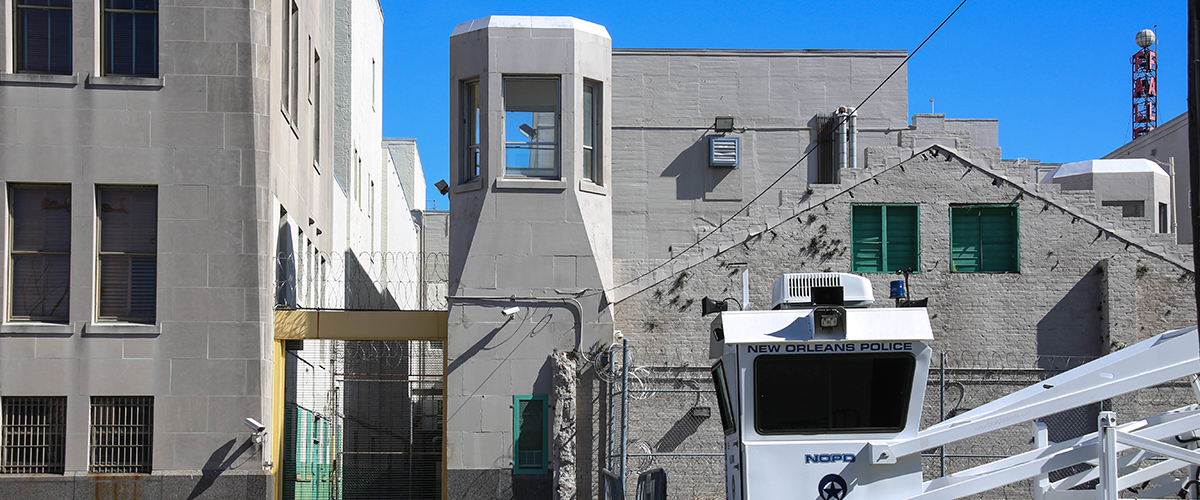Featured Jurisdictions Interagency Collaboration Jail Populations April 24, 2018
As the City of New Orleans marks its tricentennial, Mayor Mitch Landrieu announced today that the city’s jail population has reached its lowest level in nearly 40 years. This is a remarkable accomplishment for a city that just a few years ago held more people in jail per capita than any other urban jurisdiction in the country.
For the last 12 years, Vera has worked collaboratively with New Orleans community advocates and policymakers to rethink the use of the Orleans Parish jail and cap the number of existing jail beds, with the understanding that if we build them, we will fill them. Momentum for reform has grown considerably in the last three years, spurred by the MacArthur Foundation’s Safety and Justice Challenge (SJC) initiative. Today, the Challenge is a network of 34 counties, four cities, and two statewide systems across the country, all working to safely reduce their jail populations and the ethnic and racial disparities that persist within them. In the spring of 2016, New Orleans was one of just 11 jurisdictions selected to receive funding to implement an ambitious strategic plan to reduce its jail population by 21 percent in three years, from 1,545 people to just 1,277 people. Promisingly, by December 2017, the jail population had been reduced to 1,427—already reaching 56 percent of the final goal.
In a report released today, city leaders detailed progress toward their plan to reduce the jail population, with various initiatives, spanning almost every stage of the criminal justice system. The following successes were highlighted:
- Piloting a pre-booking diversion program, Law Enforcement Assisted Diversion (LEAD), that allows New Orleans police officers to redirect people facing arrest for behaviors related to mental illness, addiction, or trauma away from jail and into intensive case management;
- Basing pretrial release decisions on risk instead of money by increasing releases on recognizance for low-risk defendants; implementing a new risk assessment instrument and decision-making framework that does not rely on money bail; conducting routine bond reviews; and investing in dedicated public defenders who advocate for pretrial release—all of which led to a 40 percent increase in the number of low-risk defendants released on their own recognizance when eligible;
- Hiring a jail system administrator in the Sheriff’s office, commonly known as a jail facilitator, tasked with identifying people who do not need to be detained and addressing systemic inefficiencies that lead to over-detention;
- Developing a pilot to quickly bring people to court if they’re suspected of violating their probation so the judge can consider release pending the violation hearing; and
- Creating a diverse community advisory group to hold decision makers accountable and ensure New Orleans achieves the goals set out in its plan. Three representatives from the Community Advisory Group have full voting rights as members of the Jail Population Management Subcommittee, which is coordinated by the Mayor’s Office and oversees implementation of the plan.
New Orleans has come a very long way, but still has work to do. Some initiatives, such as a new tool to assess defendants’ ability to pay prior to imposing fines and fees, have stalled. Others are still evolving – like the transition to a new pretrial risk assessment – or will need to be expanded and institutionalized, such as a citywide expansion of LEAD. The work that remains will fall to the new mayor and council, all set to enter office in early May.
This progress, however, comes with a sobering truth: When New Orleans reaches its current goal of 1,277 people in jail, our jail incarceration rate will still be 40 percent higher than the national average. Policy makers and the general public will need to come together under the city’s new leadership to sustain existing gains and find new ways to reduce the harms of over-incarceration on all our residents. This year marks the city’s tricentennial. We must seize this unique opportunity to envision a different criminal justice system.

